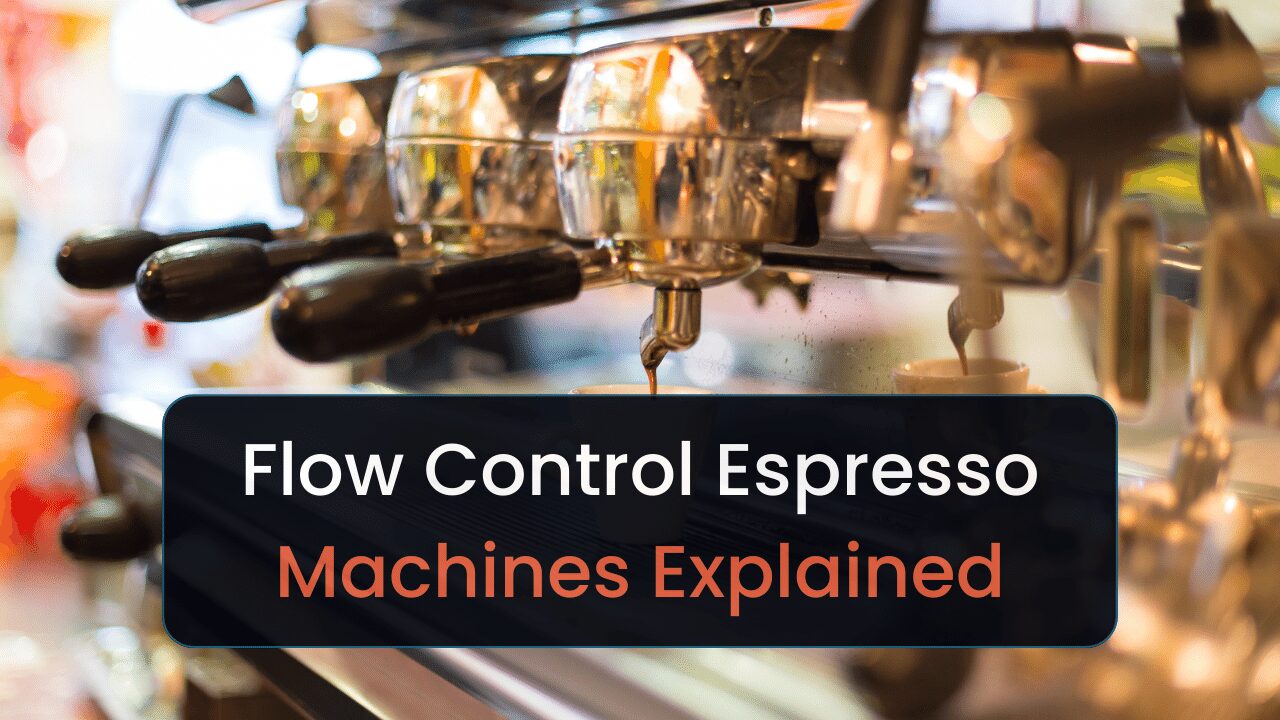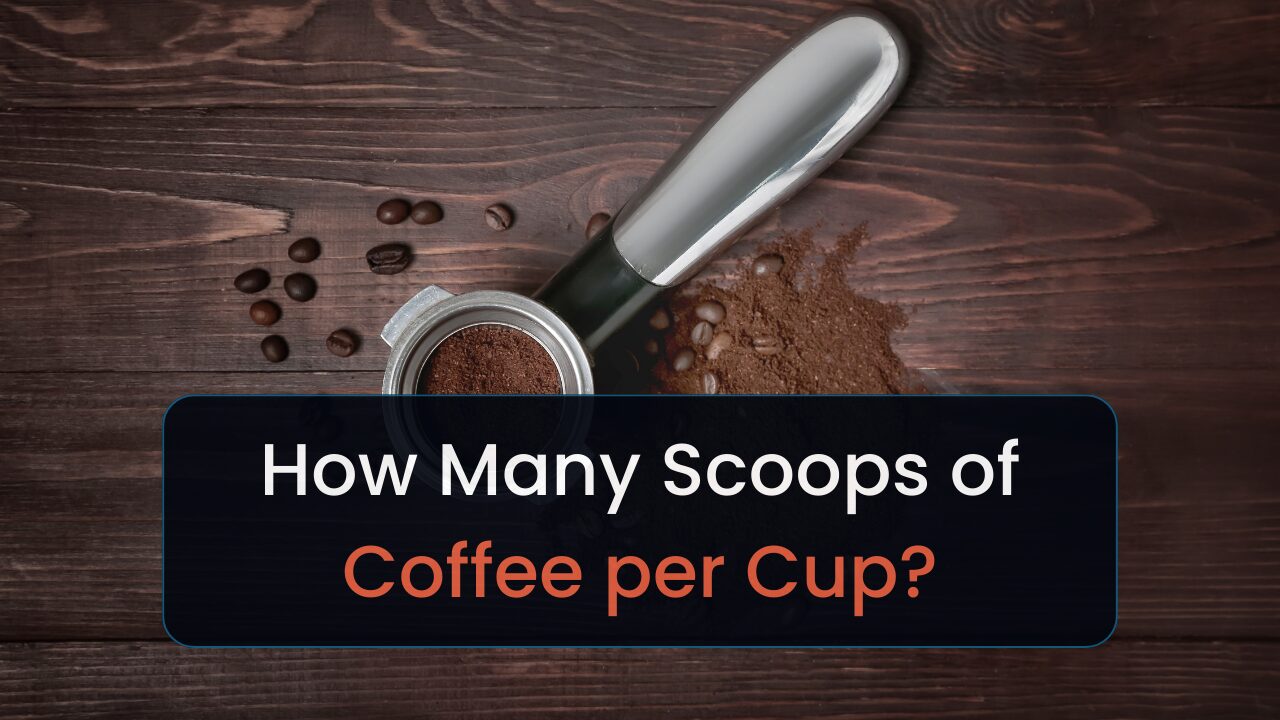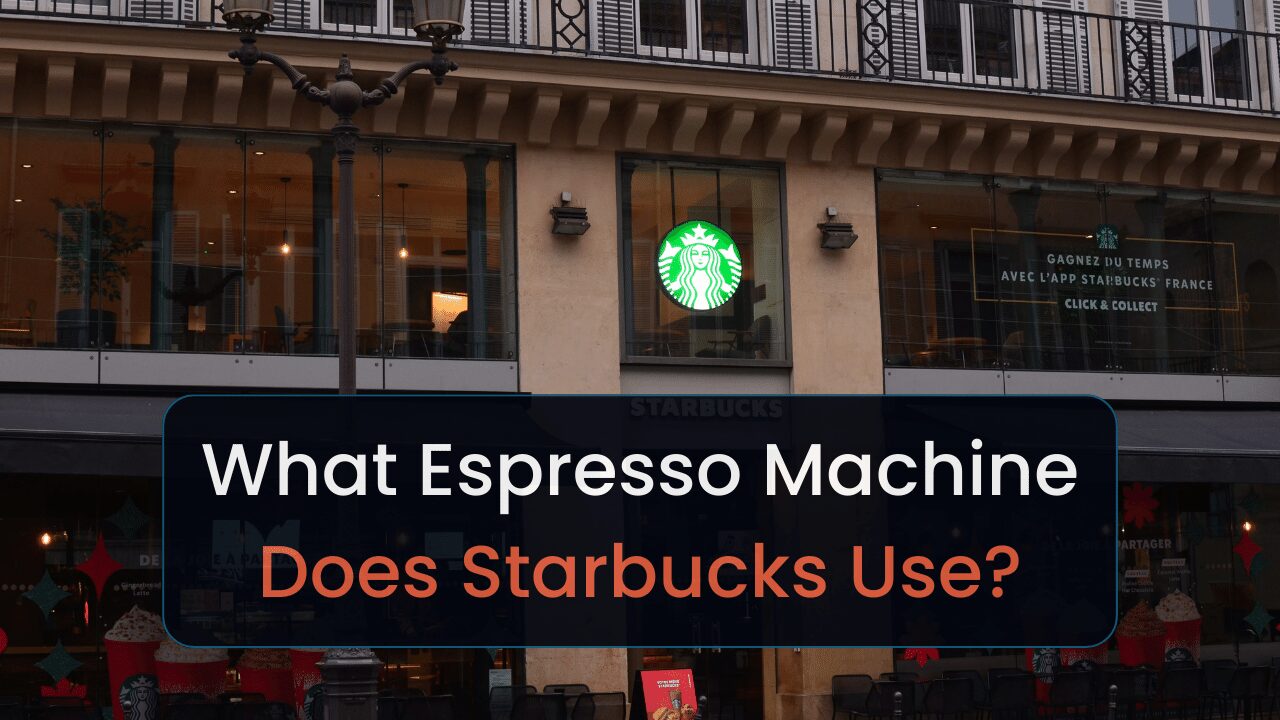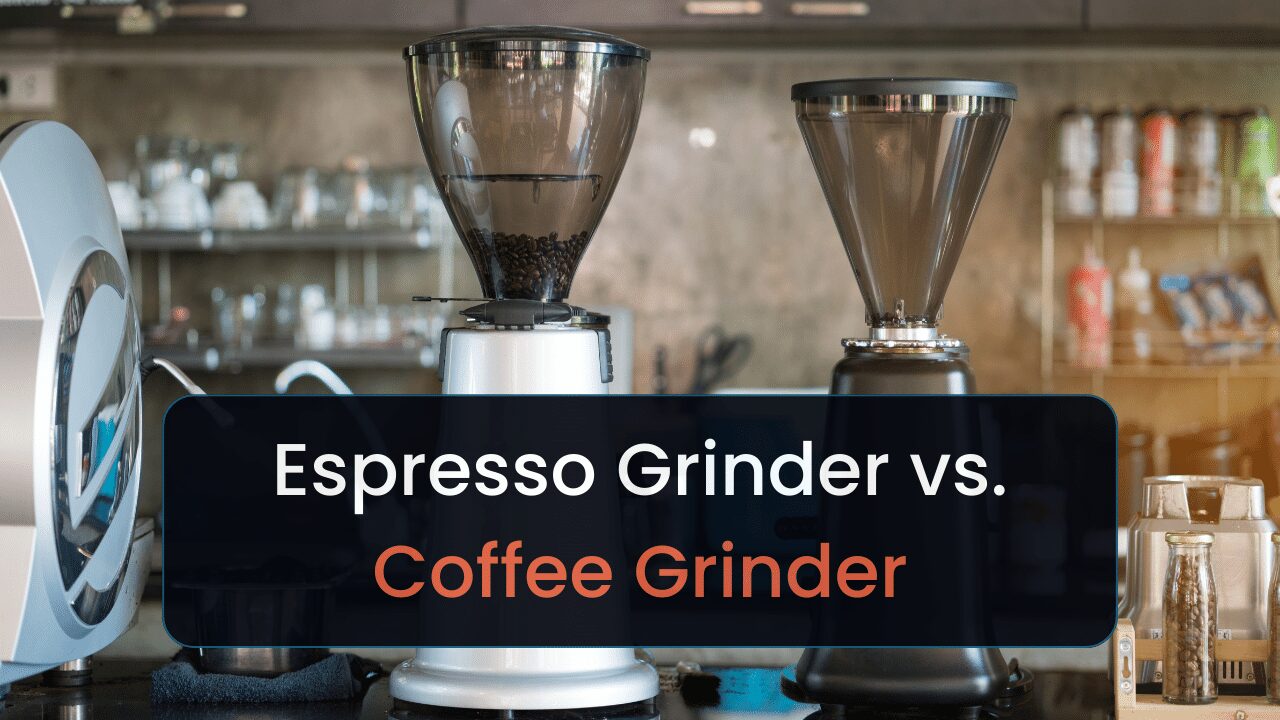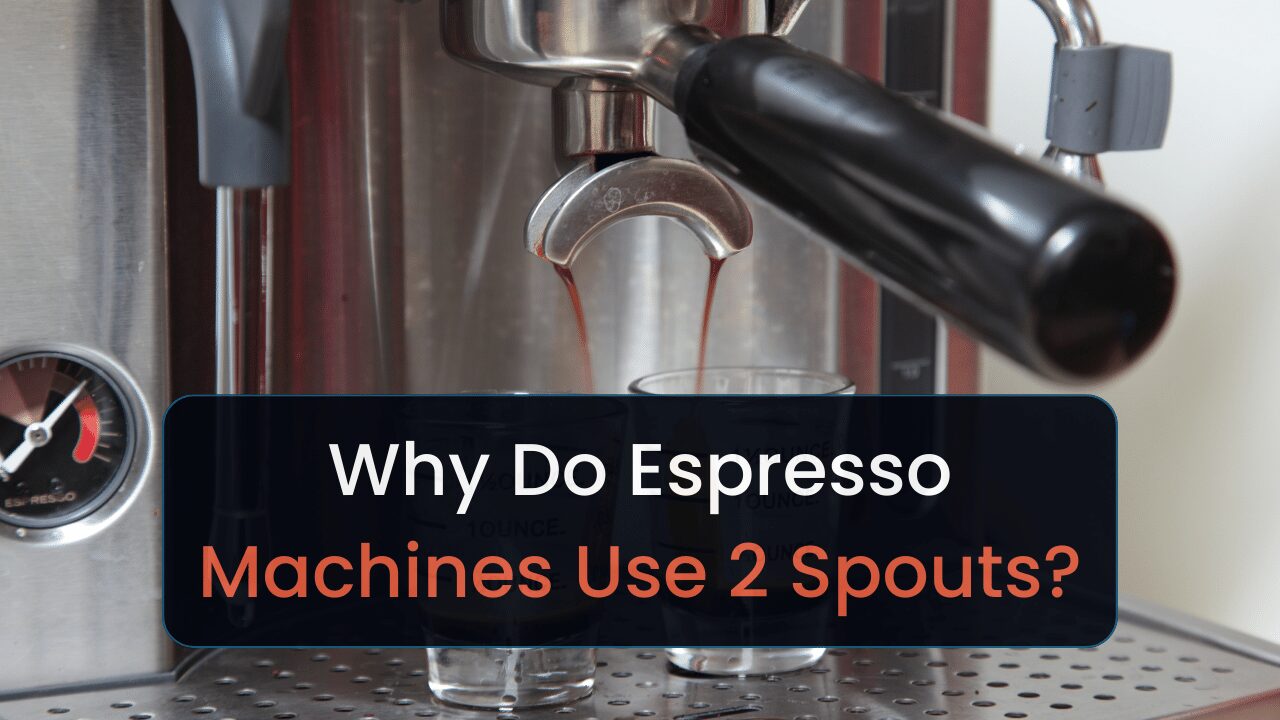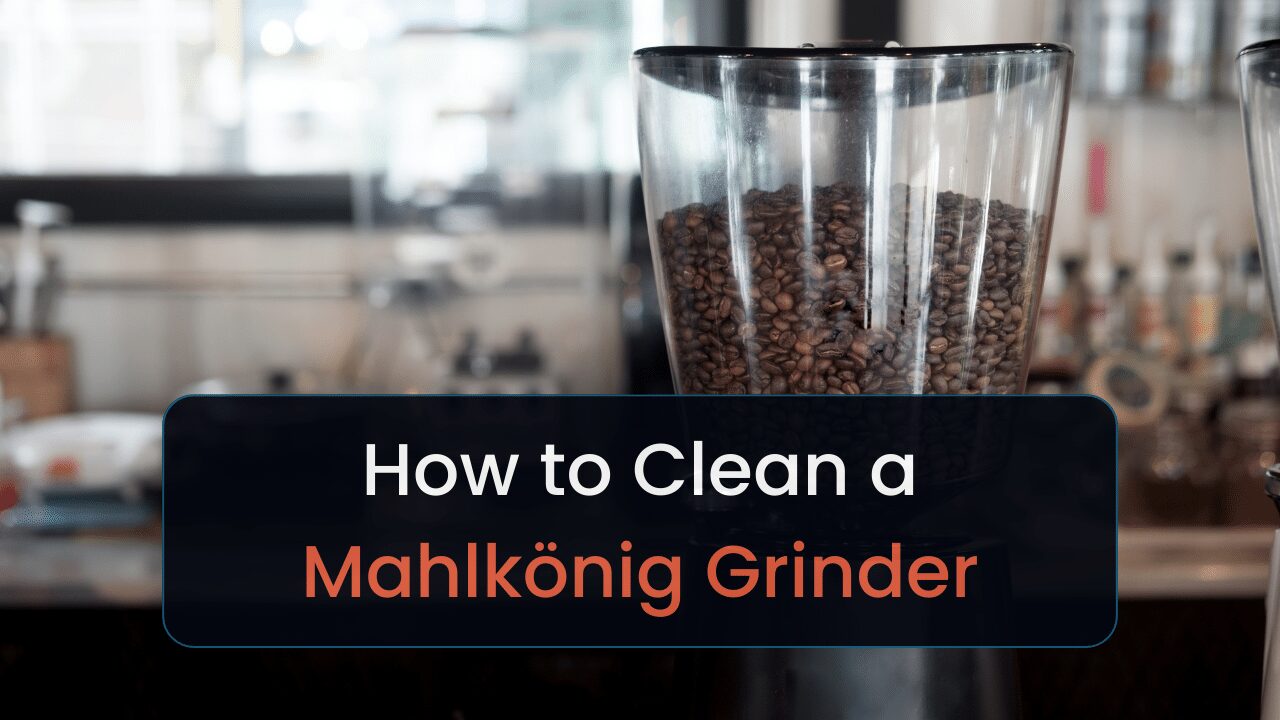Explore this guide to find the best espresso machines under $200.
As a beginner espresso maker, I want to find an affordable machine to improve my skills. That led me to write this guide on the most affordable yet high-quality espresso machines.
We chose the De’Longhi Stilosa as the best overall because it has removable components and it’s super durable. Those 2 features make it easier to clean and to last longer than machines made with plastic.
It may prove a bit costly to absolute beginners. Not to worry. You’ll find alternatives in this guide.
Let’s shop.
Top 9 Best Espresso Machines Under $200
Here’s what you’ll need to choose between:
- De’Longhi Stilosa: Best Overall
- Hamilton Beach: Best for Beginners
- Breville Café Roma: Best Machine With a Milk Steamer
- Flair Espresso Maker: Best Manual Maker
- Capresso Ultima Pro: Best for Cappuccinos
- Capresso Espresso Maker: Best Small Machine
- Ninja CM401: Best for Australians
- De’Longhi Bar: Best for British Folks
- Nespresso Pixie: Best Capsule Maker
Top 9 Espresso Machines Under $200
The following sections will provide a bunch of specs—I’ll provide why each is important in the buyer’s guide. Then, you’ll find the pros and cons. And afterward, I’ll provide why the machine’s great and who it’s good for.
Before moving on, here’s a legend that may clear up confusion:
- Dimensions:
- D: depth
- W: width
- H: height
- PID = proportional integral derivative: monitors water temperature & makes minor adjustments to keep it to a set temperature.
- ESE = Easy Serve Espresso: pods with pre-ground beans to make brewing drinks easier.
You may see confusing terms in the bulleted lists before each section, I explain what they mean under the “buyer’s guide” section.
Dive in and find your dream machine.
1. De’Longhi Stilosa: Best Overall Espresso Machine Under $200
![9 Best Espresso Machines Under $200 in [currentyear] 1 DeLonghi Stilosa Espresso Machine](https://timscoffee.com/wp-content/uploads/2023/04/DeLonghi-Stilosa-Espresso-Machine.png)
| Price | $$ |
| Type | Semi-automatic |
| Dimensions | 8.07 x 13.5 x 11.22 in (D, W, H) |
| Bars of pressure | 15 bars |
| Boiler type | single |
| Warranty | 1 year |
| Milk frother | yes |
| Water capacity | 42 oz or 42 solo shots |
Pros
- Elegant design that fits any kitchen decor
- Durable stainless steel boiler
- Removable water tank for easy cleaning & refilling
Cons
- Short warranty period of one year
- Not many color options
The Stilosa’s is best for anyone who wants all essential features to get into espresso making, yet doesn’t want to spend a fortune.
It’s the top dog on our chart because it combines affordability, aesthetics, and meets all the criteria of an excellent espresso maker. Some requirements—I’ll cover details later—specify durability, frothers, pressure, and size.
The machine’s stainless steel body helps it last much longer than its counterparts made with lesser-quality parts (like plastic).
Milk frothers are required for making milk-based drinks like cappuccinos and flat whites. A manual frother, like what’s included, controls your milk’s texture.
It has 15 bars of pressure. The ideal pressure for brewing espresso, which prevents under- and over-extracting your drinks. And the size. It’s not too big or small. The Stilosa likely won’t fit in a super compact kitchen, but it will in a smaller kitchen.
If this machine isn’t beginner-friendly enough, check out the following recommendation.
2. Hamilton Beach: Best Espresso Machine Under $200 for Beginners
![9 Best Espresso Machines Under $200 in [currentyear] 2 Hamilton Beach Espresso Machine](https://timscoffee.com/wp-content/uploads/2023/04/Hamilton-Beach-Espresso-Machine.png)
| Price | $ |
| Type | Semi-automatic |
| Dimensions | 12 x 9.6 x 11.6 in (D, W, H) |
| Bars of pressure | 15 bars |
| Boiler type | single |
| Warranty | 1 year |
| Milk frother | yes |
| Water capacity | 50 oz or 50 solo shots |
Pros
- Large water reservoir
- Removable water tank for easy cleaning
Cons
- Not that durable
- Not the prettiest machine
- No cup warmer
I have criteria later in this post on what an espresso maker should have. And Hamilton Beach’s ugly duckling (espresso maker) checks off most of the boxes. It has removable components, ideal for quick cleaning and saving time.
It has 15 bars of pressure—the ideal amount—which prevents over- and under-extraction from drinks. It’s more affordable than most options on this list, yet it has a 1-year warranty. And it has a giant water reservoir.
Ideal for making multiple espresso drinks in a row. Perfect for homes with people who don’t want to wait for the machine to reheat after each use. Instead, use the dual spout to pour 2 shots simultaneously. Or use this to make a doppio (double shot).
Then it includes a milk frother. A gizmo you’d use to aerate milk for latte art, cappuccinos, macchiatos, and other milk-based espresso drinks.
I can’t spend too much time praising this machine. We must move on.
3. Breville Café Roma: Best Espresso Machine Under $200 With a Milk Steamer
![9 Best Espresso Machines Under $200 in [currentyear] 3 breville cafe roma](https://timscoffee.com/wp-content/uploads/2023/05/breville-cafe-roma.png)
| Price | $$$ |
| Type | Semi-automatic |
| Dimensions | 9 x 9 x 12 in (D, W, H) |
| Bars of pressure | 15 bars |
| Boiler type | thermoblock |
| Warranty | 1 year |
| Milk frother | yes |
| Water capacity | 42 oz or 42 solo shots |
Pros
- Easy to clean with removable components
- Includes cup warmer
- Heats water fast
Cons
- No built-in grinder
- No color variety
- Steam wand lacks pressure
Almost all espresso machines include a milk steamer and frother. And if you’re not 100% sure what that is, it’s a device used to make milk-based drinks like cappuccinos.
Regardless, Café Roma has various features that make it stand out. For instance, it includes quality-of-life features like a removable drip tray and water tank for easy cleaning.
While minor, these removable components will save you hours of cleaning in the long run.
Then there’s the cup warmer, great for prewarming your cups for drinks. Which could make your drink taste better.
But you’ll need to buy a separate coffee grinder. And the steam wand lacks pressure, which may lead to inconsistent textures with your frothed milk. Uneven textures could result in the milk bubbles disintegrating; ruining the mouthfeel associated with drinks like lattes and cappuccinos.
Don’t like this espresso maker? You won’t get me to stop talking about the next option.
4. The NEO (Flair): Best Manual Espresso Maker Under $200
![9 Best Espresso Machines Under $200 in [currentyear] 4 The NEO by Flair](https://timscoffee.com/wp-content/uploads/2023/04/The-NEO-by-Flair.png)
| Price | $$ |
| Type | Manual |
| Dimensions | 6.10 x 12.40 x 10.24 in (D, W, H) |
| Warranty | 5 years |
| Water capacity | 60 ml or 1 solo shot |
Pros
- Affordable
- Portable & easy to disassemble
- Does not require electricity
Cons
- Has a learning curve
- Time-consuming
- Needs an external source of hot water.
- No steam wand or milk frother
Beginners who don’t mind spending 10–20 minutes on YouTube, and wasting coffee beans, should consider the NEO. It’s affordable and durable—due to its stainless steel and aluminum body. The 5-year warranty also should bring peace of mind.
You will likely waste a lot of coffee beans trying to learn how to use it. Since you’ll likely need to make many drinks before perfecting your craft. Use cheap beans until you’re satisfied with your drinks.
Speaking of beans. You must buy a separate coffee bean grinder. That’s fine, though. Because you’ll get more consistent bean grinds than machines with built-in grinders. So long as you get a conical or flat burr grinder (flat is better, but pricey).
And if you want to make milk-based drinks like cappuccinos, you’ll need a separate frother. These range from $20–$80. If searching for an espresso maker with a frother induces stress, read our next recommendation.
Whether you’re moving or camping, it’s easy to disassemble and comes with a carrying case.
5. Capresso Ultima Pro: Best Espresso Maker for Cappuccinos Under $200
![9 Best Espresso Machines Under $200 in [currentyear] 5 capresso ultima pro](https://timscoffee.com/wp-content/uploads/2023/05/capresso-ultima-pro.png)
| Price | $$$ |
| Type | Semi-automatic |
| Dimensions | 10.5 x 12.25 x 14 in (D, W, H) |
| Bars of pressure | 15 bars |
| Boiler type | thermoblock |
| Warranty | 1 year |
| Milk frother | yes |
| Water capacity | 35 oz or 35 solo shots |
Pros
- Very affordable
- Large water tank capacity
Cons
- No built-in grinder
- The steam wand isn’t powerful or adjustable
For less than $200, the Ultima Pro provides a fair amount of value. You have 5 buttons to tinker with; power, single and double cup, hot water, and steam. The hot water button’s great for making Americanos—I couldn’t find why that’s beneficial anywhere.
And the steam button for the frother, which you’d use to make cappuccinos, cortados, and a million other milk-based drinks. Since you’re likely a beginner reading this, the Ultima Pro’s the perfect machine for kicking off your espresso-making journey.
Then it includes a self-tampering portafilter. In short, it ensures consistent pressure through grounds by evening them for you.
It includes quality-of-life features like a warming tray, which primes them for when you’re ready to make your next drink. Then, as I said, the frother and simple user interface allow you to learn the basics of manual frothing and find your favorite drinks.
6. Capresso Espresso Machine: Best Small Espresso Machine Under $200
![9 Best Espresso Machines Under $200 in [currentyear] 6 Capresso Espresso Machine](https://timscoffee.com/wp-content/uploads/2023/04/Capresso-Espresso-Machine.png)
| Price | $ |
| Type | Semi-automatic |
| Dimensions | 9.75 x 7.5 x 13.25 in (D, W, H) |
| Bars of pressure | 15 bars |
| Boiler type | single |
| Warranty | 1 year |
| Milk frother | yes |
| Water capacity | 10 oz or 10 solo shots |
Pros
- Affordable
- 2-minute warm-up time
- Easy-to-understand button
Cons
- Not much water capacity
- Doesn’t look appealing
- Difficult to use
One of the most affordable options on this list provides the most required features that would satisfy my espresso-maker criteria. It has 15 bars of pressure, a 1-year warranty, a swivel frother, and somewhat easy-to-comprehend buttons.
At what cost?
Appearance.
Looks are subjective, but this thing does not look good (to me). This machine’s perfect if you’re a beginner looking to save money on an espresso maker. It’ll give you the means to perfect your craft while you save for a machine with more quality-of-life features—e.g., dual-spout portafilter.
Due to the maker’s size and weight, you could stash it in a cabinet when you have guests over.
7. Ninja CM401: Best Espresso Machine Under $200 Australia
![9 Best Espresso Machines Under $200 in [currentyear] 7 ninja cm401](https://timscoffee.com/wp-content/uploads/2023/05/ninja-cm401.png)
| Price | $$ |
| Type | Semi-automatic |
| Dimensions | 47.63 x 30.45 x 38.22 cm (D, W, H) |
| Bars of pressure | 15 bars |
| Boiler type | single |
| Warranty | 1 year |
| Milk frother | yes |
| Water capacity | 1.4 Liter or 50 solo shots |
Pros
- Brews different types of coffee beverages
- Fold-away frother
- Removable water reservoir
- Brew size selector
Cons
- No built-in grinder.
- Can’t produce the same crema as a real espresso machine
- Plastic housing that may not be very durable
- High power consumption
You could use most other espresso makers in Australia. But the Ninja CM401 takes the cake because of its internationally-recognized warranty and compatibility with Australian plug outlets and voltage.
Aside from that:
The CM401 is excellent for beginners who need a break from making espresso occasionally, yet still want the ability to make it. You could make one of the thousands of black coffee-based drinks, or any espresso-based drink.
While not apparent, it does have a milk frother. But it’s “fold-away,” meaning, it’s hidden. Frothers add oxygen to milk to create lattes, macchiatos, cappuccinos, and other similar drinks.
I love that it supports 6 cup (1.42 l) sizes (e.g., multi-serve travel mug), which shaves a couple of seconds off pouring a coffee from your brewing cup into your travel cup.
You won’t want this machine if you want to impress guests with an aesthetic coffee maker. But you must weigh whether you want practicality or a pretty espresso maker.
8. De’Longhi Bar: Best Pump Espresso Machine Under £200 UK
![9 Best Espresso Machines Under $200 in [currentyear] 8 DeLonghi Bar Espresso Machine](https://timscoffee.com/wp-content/uploads/2023/04/DeLonghi-Bar-Espresso-Machine.png)
| Price | ££ |
| Type | Semi-automatic |
| Dimensions | 24.38 x 18.29 x 30.23 cm (D, W, H) |
| Bars of pressure | 15 bars |
| Boiler type | single |
| Warranty | 1 year |
| Milk frother | yes |
| Water capacity | 1 Liter or 35 solo shots |
Pros
- Affordable
- Stainless steel boiler that ensures durability
Cons
- No built-in grinder.
- Small water tank capacity
This is also the best De’Longhi espresso machine for under £200. But why? It’s a stellar choice for kitchens with little counter space due to its size. The stainless steel body ensures it’ll last for years. And it has a milk frother.
A gizmo you’ll need to aerate milk to brew cortados, flat whites, cappuccinos, and other milk-based espresso drinks. And you’ll have a large enough water reservoir to make plenty of drinks before refilling it.
Need to clean the water tank? It’s removable, making it quick and easy to clean.
Smaller machines usually don’t include many features, but the De’Longhi Bar breaks that standard.
I almost forgot. Why’s it good for the UK? It has a warranty that folks worldwide can use. Though, people in the United Kingdom can utilize warranty policies for many of the other machines mentioned.
Including this one—
9: Nespresso Pixie: Best Capsule Coffee Maker Under $200
![9 Best Espresso Machines Under $200 in [currentyear] 9 nespresso](https://timscoffee.com/wp-content/uploads/2023/05/nespresso-pixie.png)
| Price | $$$ |
| Type | Capsule maker |
| Dimensions | 4 x 13 x 9 in (D, W, H) |
| Warranty | 5 years |
| Water capacity | 24 oz or 3 cups |
Pros
- Easy to use
- Fast heat-up time of 25 seconds
- Energy-saving mode
Cons
- Only works with Nespresso capsules
- No milk frother for latte
Nespresso pod espresso machines are ideal for brewing non-milk-based drinks (e.g., Americano and flat white. And despite not having control over how you extract espresso shots, they offer ristretto (concentrated), lungo (long), decaffeinated, and doppio (double) pods.
These are all different ways to prepare espresso (except decaffeinated), and require a bit more work on regular espresso makers. With a Nespresso, you press a button, and it does all the work for you.
And don’t worry. You will get crema.
On to why I chose the Pixie out of other Nespresso makers. It’s more affordable and has a compact design. It’s perfect for those with small kitchens, on a budget, and always in a hurry, yet wanting espresso-based drinks.
Do you want milk-based drinks like lattes, cortados, and cappuccinos? You’ll need to buy a separate frother and put in some work. Or bundle the Pixie with the Aeroccino—Nespresso’s milk frother.
Doing this may put you over $200. But it shouldn’t be too much higher.
Espresso Machine Buying Guide for Machines Under $200
The following sections will cover what to consider when shopping for a budget-friendly espresso maker:
- Brewing capabilities: What it can make.
- Water capacity: Number of drinks it can brew.
- Whether it can froth: If it can aerate milk.
- Pressure: How much pressure to look out for.
- Cleaning: Ease of cleaning & maintenance.
- Design: Size & aesthetics.
- Durability: How long it’ll last.
- Heating: How the machine heats your water & steam.
I’ll talk about why each feature is critical, criteria to consider, and other relevant information.
To learn more, read our article on espresso machines buying guide.
1. Brewing Capabilities
Consider the following factors when assessing brewing capabilities in this price range:
- Espresso shot options: Look for machines that offer flexibility to make ristretto, lungo, & doppio manually, if not automatically.
- Pressure: Aim for a minimum of 9 bars of pressure for optimal extraction [1].
- Temperature control: Consistent temperature is crucial for great-tasting espresso.
- Built-in grinder: Doesn’t produce as consistent of results as separate grinders & costs more.
- Usually only found in super-automatic espresso makers.
Despite budget constraints, you’ll still find espresso machines that deliver satisfactory brewing capabilities.
Here’s all the drinks espresso machines can make:
| Americano | Cortado | Long macchiato |
| Black Eye | Guillermo | Rápido y Sucio |
| Cappuccino | Galão | Café Crema |
| Dripped Eye | Irish Coffee | Freddo Cappuccino |
| Flat White | Café Medici | Affogato al Caffe |
| Latte | Café Breve | Mocha |
| Lazy Eye | Vienna Coffee | Cubano |
| Manilo Long Black | Macchiato | Zorro |
| Red Eye | Espresso Romano | Marocchino |
Some makers, which I specified in this guide, can make specialty shots like ristretto, lungo, and doppio.
2. Water Capacity & Number of Shots It Can Make
Keep these points in mind when considering water capacity and shot capabilities:
- Water reservoir size: Opt for a machine with at least a 30-ounce reservoir for fewer refills.
- Shot capacity: Look for models capable of making single & double shots.
In the under $200 price range, espresso machines may have smaller water reservoirs and shot capacity. This affects how many espresso variations, such as solo, ristretto, lungo, and doppio, you can make before needing to refill or clean the machine.
3. Whether It Can Froth Milk
Key features to seek for frothing milk in this price range:
- Built-in steam wand: Enables manual milk frothing on your machine.
- Compatibility: Ensure your machine accommodates external milk frothers if needed.
- Adjustable steam pressure: Allows for customized frothing to suit your preferences.
- External frother: Buy a separate milk frother if your chosen machine doesn’t include one.
Frothing milk is essential for cappuccinos, lattes, and other espresso-based drinks. In the under $200 price range, not all machines come with built-in frothers, but most do.
4. Espresso Maker Pressure
Here’s what to look for when considering pressure in budget-friendly espresso machines:
- Minimum pressure: Aim for a machine with at least 9 bars of pressure, the industry standard for optimal extraction.
- Consistent pressure: Consistency in pressure helps maintain the quality of your espresso shots.
- Pressure stability: Consistent pressure ensures uniform results.
Getting a machine with fewer than 9 bars of pressure could result in under-extraction, when the machine doesn’t extract enough flavor from your beans. Going for over 16 or more bars will result in over-extraction, when it sucks too much flavor.
Most machines will include 9 through 15 bars of pressure. If you want a bit stronger drinks, aim for 10 to 15 bars of pressure. If you want to be weaker, or to stick around the safe side, stick with 9 bars.
Experiment with different bars of pressure (so long as it includes a pressure gauge) until you find a preference.
5. Cleaning & Maintenance
Keep these factors in mind for cleaning and maintenance:
- Removable parts: Look for machines with easily removable drip trays & water reservoirs for hassle-free cleaning.
- Descaling options: Budget machines might not have built-in descaling functions, so you’ll need to descale manually using a descaling solution.
I’ve never seen a machine under $200 from a reputable brand that includes self-cleaning or descaling features. You could shave a bit of time off what you’d spend cleaning by searching for machines with removable parts (e.g., drip tray).
6. Design & Size
Consider these factors when looking for design and size:
- Dimensions: Check the measurements to ensure the machine fits your available space.
- Aesthetics: Select a design that complements your kitchen decor & personal style.
- Space-saving dimensions: Opt for a compact machine that won’t crowd your countertop.
Design and size are crucial when selecting a machine, especially if you’re short on kitchen space.
7. Warranty & Durability
Keep these factors in mind when evaluating warranty and durability:
- Warranty period: Look for machines with at least a 1-year warranty, which is typical for this price range.
- Materials: Opt for machines made with stainless steel or other high-quality materials to ensure longevity.
A machine with a solid warranty provides peace of mind, while durability ensures your investment lasts for years. Most machines come with a 1-year warranty, which means they should last for at least a year.
So long as you perform regular maintenance, and don’t treat it like crap, it should last for longer (3+ years) [2].
8. Water Boilers
Double boilers (best option) compensate for this weakness by heating much quicker, but I’ve never seen a cheap espresso maker with double boilers. And if you happen to find one that does, it’s likely a knock-off machine.
This part of the machine’s responsible for heating your water. Many machines I covered use thermoblock heaters (second-best option). They heat water on-demand instead of boiling, which is faster than a single boiler [3].
Single boilers (worst), the second-most common option budget espresso makers demand a longer wait time between brews. Making it take longer before the next person can make their drink.
Different Types of Espresso Makers Compared
I’ll cover details on the following types of espresso machines:
| Machine Type | What it Automates |
| Manual | Nothing |
| Automatic | Grinding, tamping, & brewing |
| Semi-automatic | Pressure & water flow |
| Fully-automatic | Grinding, tamping, & brewing |
| Super-automatic | Everything |
| Capsule maker | Everything |
I’ll cover what each machine automates, its advantages over counterparts, and the average price points for each maker.
For a more detailed guide, read our article on the different types of espresso machines.
1. Manual Espresso Maker
Some noteworthy points in a nutshell:
- Manual espresso makers don’t automate any aspect of the process.
- Best for coffee enthusiasts who appreciate hands-on control.
- Average price: $100 to $800, depending on the model.
- Advantages: Mastery, customization, & mechanical simplicity.
True to their name, manual espresso makers require hands-on effort to create that perfect shot. Ideal for the coffee enthusiast who loves to be involved in every step, these machines let you control every variable.
With an average price range of $100 to $800, you’ll find a wide selection of manual espresso makers. Despite many manual machines costing over $200, you’ll find, for example, the NEO, which is an excellent manual maker.
Anything better may prove unnecessary for a beginner.
2. Automatic Espresso Maker
Quick takeaways about automatic espresso makers:
- Automates grinding, tamping, & brewing.
- Best for those who value convenience & consistency.
- Average price: $300 to $3,000, depending on features.
- Advantages: Consistency, time-saving, & ease of use.
These machines manage the grinding, tamping, and brewing, leaving you with a consistent and delicious espresso. If you’re a busy coffee lover or prefer convenience, this type of machine is ideal.
Expect to pay anywhere between $300 and $3,000, depending on the brand and features. You may sometimes find decent machines by brands like De’Longhi within the $200 price range, though.
3. Semi-Automatic Espresso Maker
Key points to remember about semi-automatic espresso makers:
- Automates pressure & water flow, while you grind & tamp.
- Suitable for coffee lovers seeking a balance of control & convenience.
- Average price: $200 to $2,000, depending on brand & features.
- Advantages: Control, consistency, & user-friendliness.
These machines automate the pressure and water flow, while leaving the grinding and tamping up to you. Ideal for those who enjoy some hands-on action but appreciate a little help.
Most automatic machines I’ve covered are semi-automatic machines. You won’t have difficulty finding machines under this price point.
Semi-automatic machines typically cost between $200 and $2,000.
4. Fully-Automatic Espresso Maker
Key points about fully-automatic espresso makers:
- Automates grinding, tamping, & brewing for a hands-off experience.
- Ideal for people seeking ultimate convenience & consistency.
- Average price: $500 to $4,000, depending on brand & features.
- Advantages: Ultimate convenience, consistent quality, & time-saving.
Fully-automatic espresso makers take convenience to the next level, automating the entire espresso-making process from grinding to brewing. Perfect for busy individuals or those who want their coffee without any fuss.
These machines typically range from $500 to $4,000. You may have a more difficult time finding budget-friendly fully-automatic machines under the $200 price point.
5. Super-Automatic Espresso Maker
Fully automates the entire espresso-making process, including milk frothing.
- Ideal for those seeking luxury, speed, & ultimate convenience.
- Average price: $800 to $5,000, depending on brand & features.
- Advantages: Top-notch convenience, consistency, & variety.
Super-automatic espresso makers automate every aspect of the espresso-making process. Including grinding, tamping, brewing, and milk frothing. They’re the ultimate choice for those who want luxury, speed, and consistency.
With average prices ranging from $800 to $5,000, these wallet-busters are meant for those with a decent chunk of disposable income. You’ll have a difficult time finding reliable super-automatic machines that aren’t knock-offs under the $200 mark.
6. Capsule Espresso Machines
Key points about capsule espresso machines:
- Automates the brewing process using pre-measured coffee capsules.
- Best for those who value speed, ease, & minimal cleanup.
- Average price: $100 to $700, depending on the brand & features.
- Advantages: Simplicity, consistency, & minimal mess.
Pod espresso machines automate the brewing process with pre-measured coffee capsules. These machines suit those who prioritize speed, ease, and minimal cleanup.
Prices usually range from $100 to $700, depending on the brand and features. Many capsule makers are under $200. If you want an espresso maker that’s somewhat like a super-automatic maker, opt for these machines.
Capsule Machines vs. Espresso Makers
In summary:
- Capsule machines offer simplicity, consistency, & minimal mess.
- Espresso makers provide customization, freshness, & eco-friendliness.
- Choose based on your priorities & preferences as a coffee enthusiast.
Let’s compare the advantages of each machine:
Capsule machines:
- Simplicity: Just insert a capsule & press a button.
- Consistency: Pre-measured coffee ensures a great-tasting shot.
- Minimal mess: Capsules eliminate grinding, tamping, & messy cleanups.
Espresso makers:
- Customization: Adjust grind size, tamping pressure, & brewing time for a personalized espresso.
- Freshness: Grind whole beans right before brewing for maximum flavor.
- Eco-friendliness: Avoid single-use capsules & reduce waste.
Conclusion
If you have patience and a bit of time to learn, get the NEO manual espresso maker. It’ll last forever (not literally) and give you precise control over your drink. Those who want full automation will want the Nespresso Pixie.
And anyone who wants a traditional espresso-making experience, but doesn’t want to deal with water and pressure manually, opt for the De’Longhi Stilosa. It’s beginner-friendly and includes plenty of quality-of-life features.
Get it now.

